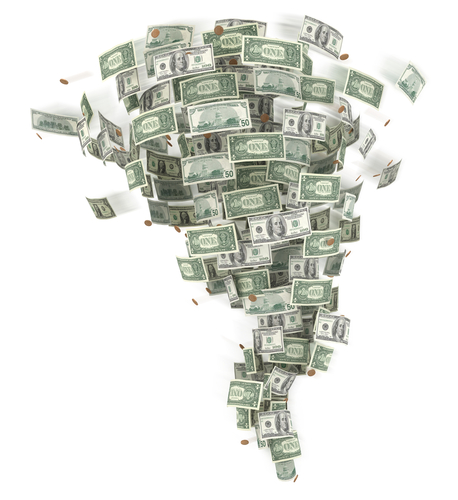Should Policy Battle the Next Recession?
As the current business-cycle expansion enters its seventh year, which makes it the fourth longest since WWII, some turn their attention to the possibility of the next recession, which will inevitably come. An example of this is Wall Street Journal article “U.S. Lacks Ammo for Next Economic Crisis.” It argues that, with interest rates at record lows and federal debt on a rising trajectory, the U.S. government does not have enough ammunition to battle the next recession. By this, they mean that there is not much room to cut interest rates (monetary policy) and not much ability to boost government spending or cut taxes (fiscal policy).
This sort of analysis exposes an assumption that few appear to question – that the government should take some steps to counteract the recession when one occurs. That, in turn, hides another assumption – that taking such steps is somehow beneficial.
But these assumptions may be at odd with reality. Government policy, in the form of monetary or fiscal stimulus, may be helpful if the economy is facing a temporary slowdown in demand — and even then economists disagree on the estimate of just how effective government stimulus is.
But fiscal or monetary stimulus is very unlikely to be helpful if the slowdown in the economy is driven by a structural adjustment. Witness the slow recovery from the 2007-2009 recession, which was clearly driven by a structural change away from the over-reliance on housing and financial sectors, despite the unprecedented monetary stimulus combined with the fiscal stimulus efforts.
And the 2007-2009 recession is not an exception. In recent decades, recessions were usually a manifestation of structural adjustments in the economy, not a temporary slowdown in demand. AIER has documented this in a recent study – “The Changing Nature of Recessions.”
In such structural recessions, recovery does not mean a return to how things were pre-recession. Rather, recovery involves changes in the composition of industries and jobs in ways that are difficult to foresee beforehand. This is what appears to be happening right now, according to another WSJ article – “Post-Recession Job Growth Coming in High-Wage Positions.” It documents the uneven recovery of jobs across occupations, with many of the jobs that existed pre-recession not coming back afterwards. Quoting from the article:
“It used to be recessions were pauses and people went back to the same job distribution, but that’s not true anymore,” said Anthony Carnevale, an economist at Georgetown and the report’s lead author. “A lot of the jobs in the rearview mirror aren’t coming back.”
This is evidence of the economy moving from recessions being a simple temporary slowdown in demand to recessions dominated by structural changes.
If the modern recessions are structural, there is not much government policy can do to “counteract” the recession, irrespective of the amount of “ammo” that policymakers have at their disposal.
A structural recession will end when the structural adjustments have happened. As I argue in “The Changing Nature of Recessions,” what government should do is create an environment that allows the economy to undergo structural adjustment more quickly and easily. Trying to cover up the need for a structural change with monetary or fiscal stimulus spending, thereby allowing economic participants to delay unpleasant adjustments, is not likely to be helpful.









